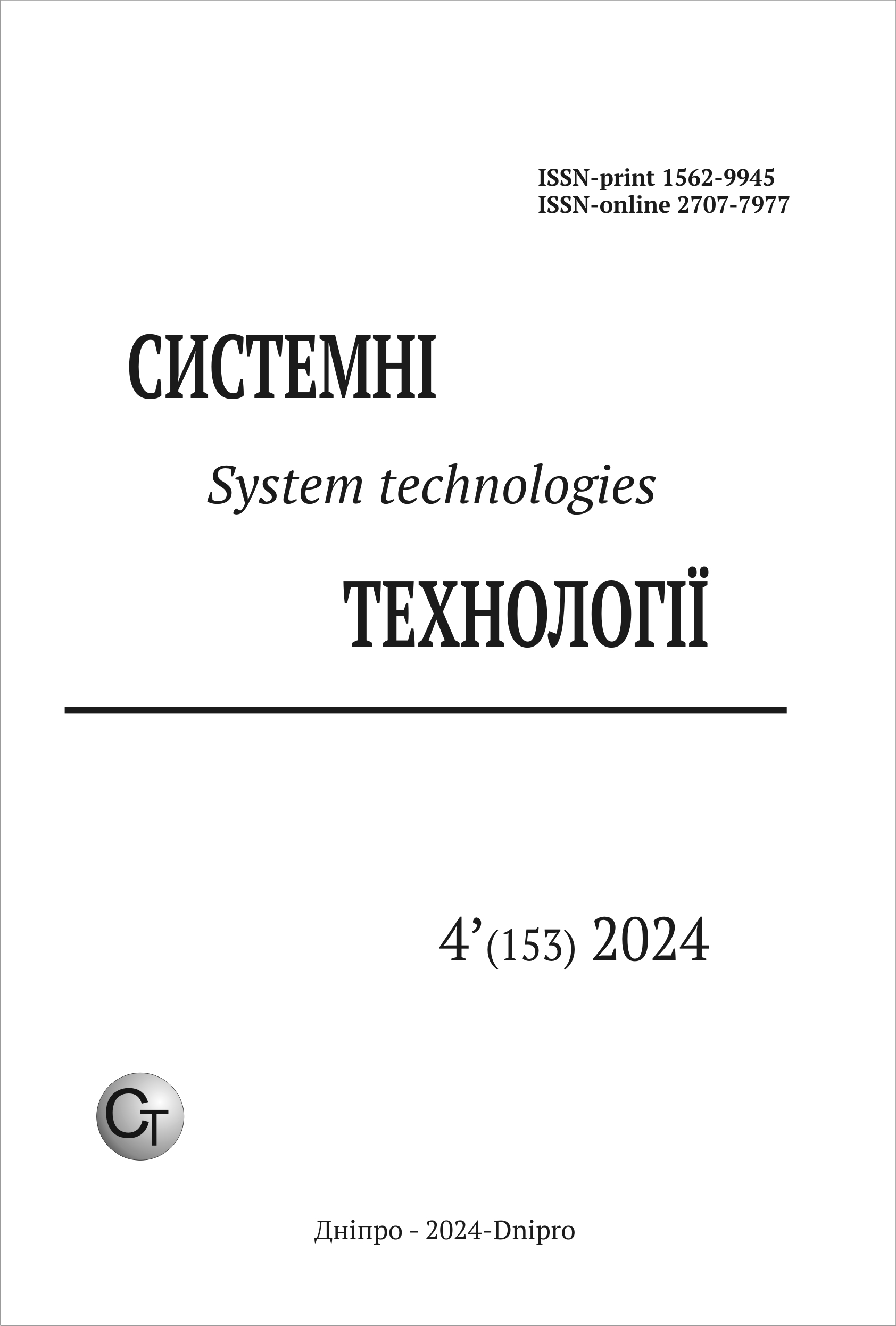ДОСЛІДЖЕННЯ МЕТОДУ ФРАКТАЛЬНОГО СТИСНЕННЯ ЗОБРАЖЕНЬ З МЕТОЮ ПОКРАЩЕННЯ ЯКОСТІ СТИСНЕННЯ
DOI:
https://doi.org/10.34185/1562-9945-4-153-2024-03Ключові слова:
фрактал, фрактальне стиснення, самоподібність, афінні перетворення, коефіцієнт стиснення, декомпресія.Анотація
Розвиток мережі Internet, поряд з доступністю все більш потужних комп'ютерів та інших цифрових пристроїв, камер, сканерів та принтерів, привели до широкого використання цифрових зображень. У зв'язку з цим зростає інтерес до поліпшення алгоритмів стиснення даних, наприклад зображень. Стиснення даних є актуальним як для швидкості передачі, так і ефективності збері-гання. Крім багатьох видів комерційного використання, технології стиснення станов-лять також інтерес у військовій галузі, наприклад, програми обробки даних телемет-рії, отриманих від перехоплювачів ракет, або для архівного зберігання даних про зо-браження місцевості для моделювання оборонних дій. Вирішення проблеми стиснення зображення або, в загальному сенсі, кодування зобра-ження, використовувало досягнення та стимулювало розвиток багатьох галузей тех-ніки та математики. В статті досліджується фрактальне стиснення зображень — метод стиснення да-них, що ґрунтується на використанні самоподібних патернів у зображенні. Цей метод дозволяє досягти високого ступеня стиснення за умови збереження деталей зобра-ження.
Посилання
Mandelbrot, B.B. (1982) The Fractal Geometry of Nature. Freeman Press, New York.
Barnsley M. FractalsEverywhere / M. Barnsley. – London: AcademicPressInc., 1988. – 370 p.
Zhang Aihua, 2014. Fractal image coding combined with discretecosine transform complement. Computer Technology and Development, Vol. 24, No. 1, pp. 61– 68.
Vatolin, D. Data compression methods / D. Vatolin, A. Ratushnyak, M. Smirnov, V. Yukin. - M.: Dialog-MYFI, 2002. - 381 p.
Karpov, P. M. Fast fractal image compression algorithm [Text] / P. M. Karpov. – Scientific session of MYFI, 2006. – Vol. 15.
Shashin K.V., Zhurba A.O. Study of the fractal image coding method // Youth: sci-ence and innovation: materials of the 11th International scientific and technical conference of students, postgraduates and young scientists, Dnipro, November 22-24, 2023: in 2 volumes / National Technical University "Dnipro Polytechnic" – Dni-pro: NTU "DP", 2023. Volume 2. P. 12-13.
Завантаження
Опубліковано
Номер
Розділ
Ліцензія
Авторське право (c) 2024 Системні технології

Ця робота ліцензується відповідно до ліцензії Creative Commons Attribution 4.0 International License.















